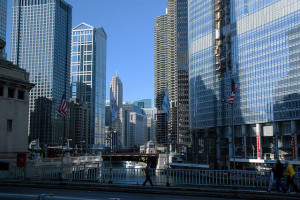 The International Monetary Fund (IMF) has downgraded the U.S. economic outlook for 2015 in the wake of a troubled first quarter.
The International Monetary Fund (IMF) has downgraded the U.S. economic outlook for 2015 in the wake of a troubled first quarter.
In its annual check of the health of the U.S. economy, the IMF has marked down the projected growth of the country for this year to 2.5% from its April forecast of 3%.
In a statement, the IMF said “the underpinnings for continued growth and job creation remain in place. However, momentum was sapped in recent months by a series of negative shocks.”
“The U.S. economy’s momentum in the first quarter was derailed by unfavorable weather, a sharp contraction in oil sector investment, the West Coast port strike, and the effects of the stronger dollar,” the IMF added.
“These developments represent a temporary drag but not a long-lasting brake on growth. A solid labor market, accommodative financial conditions, and cheaper oil should support a more dynamic path for the remainder of the year. Despite this, the weaker outturn in the first few months will unavoidably pull down 2015 growth, which is now projected at 2.5 percent.”
IMF managing director Christine Lagarde stressed that the fund still believes that “the underpinnings for a continued expansion are in place” for the U.S. economy.
“The labor market has steadily improved over the last year—job growth has averaged about 250,000 per month— and financial conditions remain very accommodative. Moreover, we expect cheaper oil prices to boost consumption in the remainder of 2015, although lower oil prices is going to continue taking a bite out of oil-related investment, as we saw in the first quarter,” she said.
As such the IMF forecasts growth in the coming quarters to be “3 percent or higher.”
However, challenges remain, it added. “We see inflation pressures as muted. Long-term unemployment and high levels of part-time work both point to remaining employment slack. Wage indicators on the whole have shown only tepid growth. When combined with dollar appreciation and cheaper energy costs, we expect inflation to start rising later in the year, but only slowly, reaching the Federal Reserve’s 2 percent medium-term objective by mid 2017.
“Over the medium term, as we highlighted last year, there is still much work to be done. Our forecasts of potential growth are now around 2 percent—a far cry from the over 3 percent average growth rates we saw before the Great Recession.”
To counter potential risks and uncertainties to the outlook, including a further delay of the housing recovery and the strong dollar, the IMF called on the U.S. Federal Reserve to delay raising rates until 2016 “until there are more tangible signs of wage or price inflation than are currently evident.”
Moreover, even after the initial step to raise rates, a gradual rise in the federal funds rate will likely be appropriate. And although important progress has been made to strengthen the U.S. financial system, there is more to be done to address the pockets of vulnerability, said the IMF.
Photo: Doug





